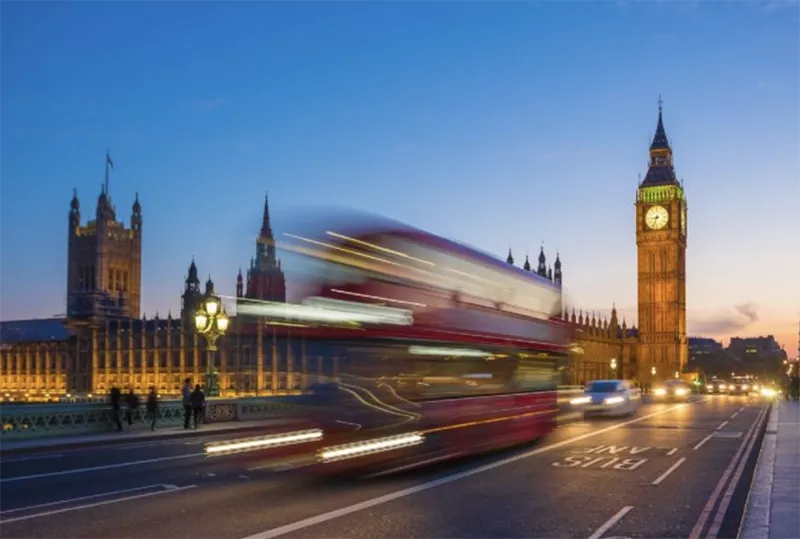Why UK?

UK transport options are plentiful, including buses, ferries, trains, taxis, airplanes, and driving your own car. The country has a well-developed transport network with good roads, modern railways, and many airports.
Keep in mind that the UK is heavily populated, which can lead to traffic congestion, especially in big cities like London. Waiting in queues might be common.
Driving during rush hours in busy cities like London can be challenging due to heavy traffic. In such cases, you might consider taking a bus or even cycling.
To make your travel easier, knowing some important facts about transport in the UK is good. This will help you choose the best options for your journeys and have a smoother experience in this vibrant country.
When it comes to transportation in the UK, roads take center stage as the most crucial and widespread mode of travel. As an international student, understanding the various types of roads is essential for getting around efficiently. Let’s take a friendly journey through the road network in the UK.
Here is what you need to know about road transportation as an international student in the UK:
The UK’s roads are divided into two main categories: major roads and minor roads.
- Minor Roads: These roads include Rural “C” and “U” roads, as well as Urban “C” and “U” roads. They form the majority of the road network and are prevalent in rural areas and some urban neighborhoods.
- Major Roads: This category encompasses Motorways (also referred to as M roads), Rural trunk “A” roads, Urban trunk “A” roads, rural principal “A” roads, and Urban principal “A” roads. The “A” roads are the main routes in the British road network, connecting major towns and cities.
Driving in the UK: Traffic Laws and Speed Limits
When driving in the UK, it’s crucial to abide by traffic laws, starting from adhering to the speed limit. The maximum speed allowed on motorways and dual carriageways is 70 mph (approximately 113 kilometers per hour). Failing to comply with speed limits may result in penalties.
Driving on the Left Side of the Road
In the UK, cars drive on the left side of the road, which might feel unusual for some international drivers. However, it’s a normal adjustment, and you’ll quickly adapt to it.
Remember to understand the different types of roads, follow traffic laws, and stay within the speed limit for a safe and enjoyable road journey across the country. Get ready to explore the beauty and diversity of the UK!
When in the UK, do as Britons do! When you first arrive in the UK, especially in places like London, the traffic might feel overwhelming. But don’t worry; even the locals find it hectic sometimes. As you settle in, you’ll learn to choose the best transport option for getting around. Trains are a fantastic choice!
Trains are safer, more comfortable, cheaper, and faster than cars or buses. For example, it takes only about 1 hour to travel from London to Brighton by train. Plus, you can get a travel ticket that saves you time and money, so you won’t need to buy a ticket every time you ride.
The UK’s railway network is the country’s oldest type of transportation and the world’s oldest railway system.
Trains run both above and below ground.
The following major cities in the UK have underground railway systems.
- London (Underground/Tube)
- Liverpool (connected to the regional Merseyrail network)
- Glasgow (Subway)
- Newcastle upon Tyne (Tyne and Wear Metro).
Here are the various types of ticket fares available in the UK:
- Advance: Advance fares are heavily discounted tickets that require booking in advance. They are usually available for specific trains and have limited availability. Booking early can save you a significant amount compared to purchasing tickets on the day of travel.
- Off-Peak and Super-Off Peak: Off-Peak and Super Off-Peak fares are available for travel during less busy periods, typically outside of rush hours.
These tickets often come at a discounted price, making them affordable for those with flexible travel schedules.
- Anytime. As the name suggests, anytime fares allow you to travel at any time on the selected route. While they offer flexibility, they are generally more expensive than off-peak or advance fares.
- Season and Flexi Season. Season tickets are ideal for regular commuters, as they offer unlimited travel between two selected stations for a specific duration (e.g., weekly, monthly, or yearly).
They are an affordable option for frequent travelers.
- Oyster and Contactless. Oyster and contactless payment methods are popular and convenient for international students using public transportation, providing a cashless way to pay for trains, buses, trams, and the Underground, with fare capping and flexible payment options for cost-effective and hassle-free travel.
- Rangers and Rovers. Most train companies offer Ranger and Rover tickets for unlimited travel within a specific area and time. However, some tickets may have restrictions on travel times or days. Check the details before buying.
Remember: Always buy a ticket before boarding the train and keep it with you because conductors or inspectors may charge you a fine if you don’t have one.
Driving in the UK may initially seem tricky as you have to drive on the left side of the road and get used to cars with the steering wheel on the right side. However, this won’t make driving in the UK any less enjoyable than anywhere else in the world. You will experience amazing scenery when driving on British roads, especially in rural areas.
Car travel is very common in the UK. Statistics show that 73% of citizens travel by car, van, or taxi, and almost every family in the UK owns a car. As a result, a majority of Britons hold a driving license.
If you’re willing to bring a car to the UK, you need to fulfill specific legalization requirements. This includes getting approval that your car aligns with safety and environmental features set by the British government. If your car doesn’t meet these requirements, you won’t be approved to drive it.
Note: If you come from a non-EU country, you are allowed to drive for up to 12 months in the UK before entering the procedure to get the permanent allowance.
The UK has a vast and well-connected air transportation system, with many airports across the country, including about 12 international ones. Millions of passengers travel through British airports each year, making the UK’s aviation sector one of the largest globally.


